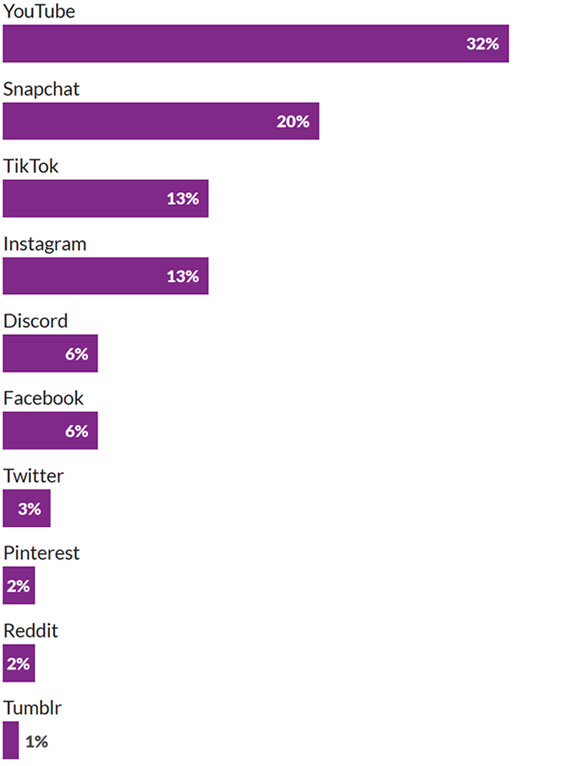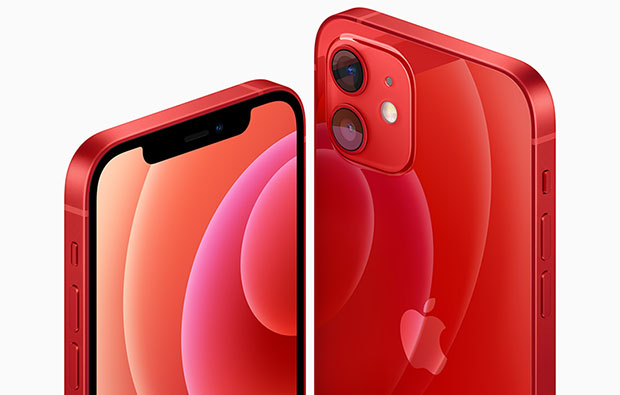Although many people haven’t wrapp bed their minds around 5G mobile technology yet, Samsung has already started talking about 6G.
In a recent report, the South Korean electronics giant reveals its 6G vision of the future, including technical and societal megatrends, new services, requirements, candidate technologies, and an expected timeline of standardization.
“While 5G commercialization is still in its initial stage, it’s never too early to start preparing for 6G because it typically takes around 10 years from the start of research to commercialization of a new generation of communications technology,” Sunghyun Choi, head of Samsung’s Advanced Communications Research Center, explained in a statement.
In its report, Samsung predicted that earliest commercialization of 6G could occur as early as 2028, with mass commercialization taking place roughly two years after that.
The standards groups that develop protocols for mobile telecommunications, known as the 3rd Generation Partnership Project, or 3GPP, roll new standards about every decade or so, noted Kevin Krewell, a principal analyst in the San Jose, Calif. offices of Tirias Research, a high-tech research and advisory firm.
“Assuming there’s no big hang up in committees, the Samsung prediction seems about right”.
Leaving 5G in the Dust
Samsung also sees the technology taking a huge performance leap over 5G networks, which are currently barely getting off the ground. Peak data rates for 6G will be 1,000 gigabits per second, or about 50 times that of 5G, and air latency — the time between when an instruction is issued and when it’s performed — of 100 microseconds, or one-tenth the latency of 5G.
“The goals of 6G will be to take 5G to the next level of magnitude on bandwidth and latency,” Krewell said.
“The overall goal is to make 6G connectivity even more reliable and robust than 5G, allowing more connected services, such as radio connected drones and real-time augmented reality glasses,” he continued.
Diagram of key performance requirements between 6G and 5G
A comparison of key performance requirements between 6G and 5G [Credit: Samsung]
Reliability will be a sensitive issue if 6G is used to control autonomous vehicles, observed Jack E. Gold, founder and principal analyst at J.Gold Associates, an IT advisory company in Northborough, Mass.
“6G will need to expand on reliability because if you’re using things like autonomous vehicles, you can’t have signals going away and causing car crashes,” he told TechTV Network.
In its report, Samsung maintained that 6G will be used for advanced services, such as immersive extended reality, high-fidelity mobile hologram and use of digital “twins” in virtual worlds.
Use Cases
Predicting use cases for 6G may be a little premature, however.
“It’s hard to know what will be the technology that drives the adoption of 6G,” Krewell said. “In 2010, did we know that AR and VR, autonomous vehicles, and drones would be high on our list of uses for 5G?”
“It’s really hard to conceptualize what the use cases for 6G might be, when we’re still trying to figure out the use cases for 5G,” added Jason Leigh, a senior research analyst for mobility at IDC, in Framingham, Mass., a market research company.
Nevertheless, if 6G lives up to its speed and latency specs, it could be used in a variety of ways.
“Features like these could support a wide range of advanced education, training and certification processes in various industries,” said Charles King, the principal analyst at Pund-IT, a technology advisory firm in Hayward, Calif.
“They could also enhance remote support for healthcare and other hard to come by services for rural communities,” he told TechNewsWorld.
“Immersive applications for product and industrial design are likely,” he added. “There will also likely be numerous military applications, from advanced communications to real-time battlefield analysis.”
Propagation Problems
Because 6G will be operating in the terahertz bandwidth, it’s expected to encounter problems similar to those currently facing 5G millimeter wave technology. That’s acknowledged in the Samsung report.
“To cope with the difficult propagation characteristics of THz band,” the report noted, “it may be natural to enhance the massive MIMO technology that was introduced to support millimeter wave (mmWave) band in 5G. Since the THz band requires much more antennas than the mmWave band, there may be significantly more practical difficulties.” MIMO — multiple-input, multiple-output — is a way for multiplying the capacity of a radio link.
“The challenge with millimeter waves is they can only travel three blocks, and they don’t penetrate doors very well,” Leigh told TechNewsWorld. “When you get up to that terahertz level, those propagation issues multiply.”
Initially, wireless carriers will likely adopt the same phase-in strategy they’re using with their 5G transition when they introduce 6G. Early 6G phones will support 5G and 6G until the newer technology becomes ubiquitous.
“You take the best of what’s already available and leverage that to take you to the next step,” Gold explained. “Eventually, you reach the next step and get rid of the older stuff.”
More Machines Than People
If 5G is any indicator, carriers could have problems selling 6G to consumers.
“The sell for consumers seems pretty hazy,” King said. “That is, unless vendors come up with entirely new types of devices and form factors.”
“Businesses which could utilize 6G features and functions to improve efficiency, lower costs or create new market opportunities seem the likeliest targets,” he added.
However, consumers may not be playing as big a role in 6G adoption as they’ve played in past new generation rollouts.
The Samsung report noted that it’s expected that the number of connected devices will reach 500 billion by 2030, which is about 59 times larger than the expected world population at that time of 8.5 billion.
Mobile devices will take various form-factors, it continued, such as augmented reality glasses, virtual reality headsets, and hologram devices.
Increasingly, it noted, machines will need to be connected by means of wireless communications. Such connected machines will include vehicles, robots, drones, home appliances, displays, smart sensors installed in various infrastructures, construction machines, and factory equipment.
“As the number of connected machines grows exponentially, those machines will become dominant users of 6G communications,” the report maintained.
“Looking back at the history of wireless communications, technologies have been developed assuming services for humans as the major driving applications,” it continued. “In 5G, machines were also considered in defining requirements and developing technologies.”
“We expect new 6G technologies have to be developed specifically to connect hundreds of billions of machines taking into account what is required for machines,” it predicted.



















 Ferdinand Moolman is Chief Executive Officer (CEO) of one of Nigeria’s biggest, non-oil foreign direct investment – MTN Nigeria Communications Plc. He was promoted to the position of CEO on December 1, 2015, as part of a major reshuffling of the telco’s operating structure which was aimed at strengthening operational oversight, leadership, governance, and regulatory compliance. Before then, he was the Chief Financial Officer (CFO), a position he occupied immediately he was transferred from MTN Iran cell where he was the Chief Operating Officer (COO). It makes a lot of sense that the CEO of the biggest company listed on the Nigerian bourse should be the highest-paid CEO in Nigeria. Moolman earned N586 million in 2019, 2.5% up from the N571 million he took home in 2018.
Ferdinand Moolman is Chief Executive Officer (CEO) of one of Nigeria’s biggest, non-oil foreign direct investment – MTN Nigeria Communications Plc. He was promoted to the position of CEO on December 1, 2015, as part of a major reshuffling of the telco’s operating structure which was aimed at strengthening operational oversight, leadership, governance, and regulatory compliance. Before then, he was the Chief Financial Officer (CFO), a position he occupied immediately he was transferred from MTN Iran cell where he was the Chief Operating Officer (COO). It makes a lot of sense that the CEO of the biggest company listed on the Nigerian bourse should be the highest-paid CEO in Nigeria. Moolman earned N586 million in 2019, 2.5% up from the N571 million he took home in 2018.
 Segun Agbaje joined Guaranty Trust Bank as a pioneer staff in 1991 and rose through the ranks to become the Managing Director and Chief Executive Officer in 2011 after Tayo Aderinokun, the previous CEO, passed on. As CEO, Agbaje took N400 million home in remunerations for the year 2019. This shows an increase of N16 million from his N384 million remuneration in 2018, and given the impressive results that the bank showed for the year, we can say that it was duly justified. He was recently elected an independent member of the Board of PepsiCo, the American owners of popular beverage drinks Pepsi and Moutain Dew. As Nairametrics reported, Agbaje will officially assume his duties as a board member and audit committee member at PepsiCo by mid-July.
Segun Agbaje joined Guaranty Trust Bank as a pioneer staff in 1991 and rose through the ranks to become the Managing Director and Chief Executive Officer in 2011 after Tayo Aderinokun, the previous CEO, passed on. As CEO, Agbaje took N400 million home in remunerations for the year 2019. This shows an increase of N16 million from his N384 million remuneration in 2018, and given the impressive results that the bank showed for the year, we can say that it was duly justified. He was recently elected an independent member of the Board of PepsiCo, the American owners of popular beverage drinks Pepsi and Moutain Dew. As Nairametrics reported, Agbaje will officially assume his duties as a board member and audit committee member at PepsiCo by mid-July. Yaw Nsarkoh has had a long career within the Unilever Group, occupying top positions like the African Regional Brand Manager, Production Manager for Unilever Ghana, among others. He headed several regional headquarters of the global manufacturing company, especially in Africa. He also served as a Strategic Assistant to Unilever’s President for Asia, Africa, Central, and Eastern Europe. He resigned from his position as Managing Director in December 2019, to take up new roles within the Unilever group across Europe. He was succeeded by Carl Raymond Cruz in January 2020. Prior to his departure, he earned N303 million in 2019, 8% less than the N330 million he earned in 2018.
Yaw Nsarkoh has had a long career within the Unilever Group, occupying top positions like the African Regional Brand Manager, Production Manager for Unilever Ghana, among others. He headed several regional headquarters of the global manufacturing company, especially in Africa. He also served as a Strategic Assistant to Unilever’s President for Asia, Africa, Central, and Eastern Europe. He resigned from his position as Managing Director in December 2019, to take up new roles within the Unilever group across Europe. He was succeeded by Carl Raymond Cruz in January 2020. Prior to his departure, he earned N303 million in 2019, 8% less than the N330 million he earned in 2018. For the financial year ended December 31st, 2019, Michael Puchercos earned N272 million, marking an 18.7% increase when compared to the N229 million he earned in 2018. Before his appointment as Lafarge Africa Plc’s CEO, he worked in various capacities within the cement industry for two decades. He was the President & Chief Executive Officer of Lafarge Halla Cement; Director of Strategy and Systems at Lafarge Gypsum; Chief Executive Officer of Bamburi Cement and Hima Cement; and Chairman of Mbeya Cement in Tanzania. He resigned from Lafarge in January 2020 to join competitor brand, Dangote Cement Plc and was succeeded by Mr. Khaled Abdelaziz El Dokani, the former country CEO of Lafarge Holcim Iraq.
For the financial year ended December 31st, 2019, Michael Puchercos earned N272 million, marking an 18.7% increase when compared to the N229 million he earned in 2018. Before his appointment as Lafarge Africa Plc’s CEO, he worked in various capacities within the cement industry for two decades. He was the President & Chief Executive Officer of Lafarge Halla Cement; Director of Strategy and Systems at Lafarge Gypsum; Chief Executive Officer of Bamburi Cement and Hima Cement; and Chairman of Mbeya Cement in Tanzania. He resigned from Lafarge in January 2020 to join competitor brand, Dangote Cement Plc and was succeeded by Mr. Khaled Abdelaziz El Dokani, the former country CEO of Lafarge Holcim Iraq. Jordi Borrut Bel is the Chief Executive Officer and Managing Director of Nigerian Breweries Plc. Mr Bel is an experienced manager and has served in Heineken’s different subsidiaries across different countries. He was Managing Director at Brarudii SA, Manager-Project Distribution at Heineken Slovensko AS, Brand Manager at Heineken France SAS and Director-Sales & Distribution at Heineken España SA. His last position prior to coming to Nigerian was that of the Managing Director of Heineken Burundi. Bel’s earnings experienced a quantum leap from N190 million in 2018 to N271 million in 2019, an increase of about 42%. He was the sixth highest-paid CEO in 2019.
Jordi Borrut Bel is the Chief Executive Officer and Managing Director of Nigerian Breweries Plc. Mr Bel is an experienced manager and has served in Heineken’s different subsidiaries across different countries. He was Managing Director at Brarudii SA, Manager-Project Distribution at Heineken Slovensko AS, Brand Manager at Heineken France SAS and Director-Sales & Distribution at Heineken España SA. His last position prior to coming to Nigerian was that of the Managing Director of Heineken Burundi. Bel’s earnings experienced a quantum leap from N190 million in 2018 to N271 million in 2019, an increase of about 42%. He was the sixth highest-paid CEO in 2019. Seventh on the list is Mauricio Alarcon, the Chief Executive Officer of Nestle Nigeria Plc. Alarcon was appointed CEO in 2016, after a progressive 17 years career with the Nestle brand. He started as Area Sales Manager with Nestle Mexico and later became a Senior Brand Manager. He worked as Marketing Advisor at Nestle Headquarters in Switzerland, Country Manager at Nestle Cote d’Ivoire and later became Managing Director of Nestle Atlantic Cluster between June 2016 and September 2016, overseeing Senegal, the Gambia, Guinea, and Cote d’Ivoire. Alarcon earned N218 million in 2019, a slight increase from the N210 million in 2018 he earned in 2018, placing him 7th place in the list.
Seventh on the list is Mauricio Alarcon, the Chief Executive Officer of Nestle Nigeria Plc. Alarcon was appointed CEO in 2016, after a progressive 17 years career with the Nestle brand. He started as Area Sales Manager with Nestle Mexico and later became a Senior Brand Manager. He worked as Marketing Advisor at Nestle Headquarters in Switzerland, Country Manager at Nestle Cote d’Ivoire and later became Managing Director of Nestle Atlantic Cluster between June 2016 and September 2016, overseeing Senegal, the Gambia, Guinea, and Cote d’Ivoire. Alarcon earned N218 million in 2019, a slight increase from the N210 million in 2018 he earned in 2018, placing him 7th place in the list. Presently, Lars Richter occupies the position of Managing Director & Director at Julius Berger Nigeria Plc, a position he was appointed to in 2018. Before this appointment, he had garnered over 16 years’ experience in the construction industry, with 10 years spent in Nigeria, in different positions including Division manager, Project manager, and Project engineer. Richter places 8th on this list, with an income of N217 million in 2019. This is quite a significant reduction from the N319 million he received in 2018 although there is no obvious justification for this.
Presently, Lars Richter occupies the position of Managing Director & Director at Julius Berger Nigeria Plc, a position he was appointed to in 2018. Before this appointment, he had garnered over 16 years’ experience in the construction industry, with 10 years spent in Nigeria, in different positions including Division manager, Project manager, and Project engineer. Richter places 8th on this list, with an income of N217 million in 2019. This is quite a significant reduction from the N319 million he received in 2018 although there is no obvious justification for this. Emuwa earned an annual net income of N172 million in 2019, the same as he did in 2018. He was appointed CEO of Union Bank of Nigeria in November 2012, after a progressive 25-year banking career at CitiBank across several African countries. He started out as a Management Assistant at Citibank Nigeria Limited and was later promoted to the position of Country Head, Cameroon. At this time, he was also overseeing all the bank’s activities in the Central African region, including Congo and Gabon. He occupied strategic positions in the company across several countries like Tanzania, Ghana, Niger, and Nigeria, serving as the CEO between 2005 and 2012, before he took up the appointment with Union Bank Plc.
Emuwa earned an annual net income of N172 million in 2019, the same as he did in 2018. He was appointed CEO of Union Bank of Nigeria in November 2012, after a progressive 25-year banking career at CitiBank across several African countries. He started out as a Management Assistant at Citibank Nigeria Limited and was later promoted to the position of Country Head, Cameroon. At this time, he was also overseeing all the bank’s activities in the Central African region, including Congo and Gabon. He occupied strategic positions in the company across several countries like Tanzania, Ghana, Niger, and Nigeria, serving as the CEO between 2005 and 2012, before he took up the appointment with Union Bank Plc. Total Nigeria Plc has Imrane Barry as its Managing Director. Imrane is not new to the Total group as he had previously served as Managing Director of Total Uganda in 2013, Total Cameroon SA in 2015 and Total Nigeria Plc in 2018. He also worked with other Total affiliates in Kenya and Ivory Coast, at SEP-Congo as the Technical and Transport Director, and in Paris as the Strategy and Development Senior Officer. He was appointed Deputy Executive Vice-President of Total Africa & Middle East in 2012, Before joining Total, Imrane worked in several capacities in Engineering and Construction Companies in Guinea Conakry, Cote d’Ivoire and Gabon. Imrane took home N163 million as remunerations in 2019, 41% more than his 2018 earnings of N115 million.
Total Nigeria Plc has Imrane Barry as its Managing Director. Imrane is not new to the Total group as he had previously served as Managing Director of Total Uganda in 2013, Total Cameroon SA in 2015 and Total Nigeria Plc in 2018. He also worked with other Total affiliates in Kenya and Ivory Coast, at SEP-Congo as the Technical and Transport Director, and in Paris as the Strategy and Development Senior Officer. He was appointed Deputy Executive Vice-President of Total Africa & Middle East in 2012, Before joining Total, Imrane worked in several capacities in Engineering and Construction Companies in Guinea Conakry, Cote d’Ivoire and Gabon. Imrane took home N163 million as remunerations in 2019, 41% more than his 2018 earnings of N115 million.